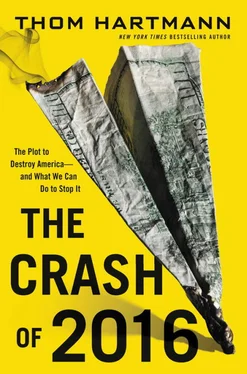I saw firsthand how decisions are made at Mondragon as I stood on the spotless factory floor of a washing-machine manufacturing plant within Mondragon. All around me, worker-owners at the state-of-the-art industrial facility were converting sheet metal into finished washing-machine parts and assembling electronics to go in those washing machines on a U-shaped assembly line. That’s when a “manager” walked up asking for everyone’s attention. He notified his colleagues that the following Thursday there needed to be a schedule change due to a local event and therefore a different number of units would have to be produced.
Rather than giving new orders regarding how the workers were supposed to deal with the change, he ceded his authority to those on the assembly line and asked, “How do you think we should do this?”
Then a conversation took place. The workers offered suggestions, critiquing the strengths and weaknesses of each idea. There was no arguing or complaining or fighting; it was an exchange of ideas, with the “manager” listening attentively as though he was actually the one who was being told how things would change next Thursday.
Ten minutes or so passed and a consensus was reached on how the factory would adjust; the “manager” thanked everyone and walked off; and the machine and conveyor belts were turned back on. It was true democracy in the workplace.
But cooperatives are just one way of “democratizing capital.” Germany has another way.
The Mercedes and the Labor Union
When the American auto companies were on the verge of failure following the financial crisis of 2008, the Obama administration moved to bail them out.
Conservatives were outraged. Mitt Romney in particular called for letting the American auto industry go bankrupt. Since most of the American auto plants employed unionized workers, a bankruptcy would have allowed the companies to renegotiate union contracts and pensions, thus continuing the right-wing assault on unions.
At the time, the Economic Royalists argued that American auto companies were failing not because they were getting destroyed in the market by better-quality cars made overseas or by irresponsible free-trade policies but instead because they were paying unionized workers far too much. In today’s global economy, the Royalists insisted, workers had to take pay cuts so that the corporation they worked for could be more profitable and more competitive in the global market. You can call it the growing pains of globalization.
But is it true? Do American workers really need to lose wages for the sake of our economy?
Not if we just do what Germany is doing. In 2010, Germany manufactured 5.5 million cars. The United States manufactured less than half that—just 2.7 million cars. So according to the logic of the Economic Royalist—Germany must pay their autoworkers jack, right?
Actually, Germany paid their autoworkers about $67 an hour (including wages and benefits). But the United States paid its average worker only $33 an hour (also including wages and benefits). On top of that, German car manufacturers were highly profitable, despite the comparatively large paychecks of their workers. BMW earned a before-tax profit of 3.8 billion euros, and Mercedes-Benz hauled in profits of 4.6 billion euros.
So how did Germany just completely blow up the Royalist myth that car companies have to pay their workers less to be more profitable and manufacture more cars? How can Germany do the opposite: pay their workers more, be more profitable, and make more cars?
The answer: democracy.
First, Germans have completely democratized the auto plant by unionizing nearly every single autoworker in the country—under IG Metall, the German autoworkers union. With such a high union membership rate, autoworkers hold a lot of sway when they threaten to go on strike. That’s how workers have been able to keep wages high and working conditions satisfactory. But as Horst Mund, the head of the International Department of the German autoworkers union, pointed out, unions hardly ever go on strike in Germany, “because there is an elaborate system of conflict resolution that regularly is used to come to some sort of compromise that is acceptable to all parties.”
One reason for the more collaborative relationship between CEOs and workers is that, unlike in the United States, unions aren’t under attack and there aren’t any “right to work for less” zones in Germany to which car manufacturers can flee so they can ignore the voice of organized labor.
Another and perhaps more powerful reason is that there is a constitutional amendment in Germany that forces corporate executives to listen to labor unions. The Works Constitution Act requires every factory to set up a works council that gives representatives of the workers a seat at the table in every decision-making process at the factory. That is the democratization of capitalism, expanding the decision-making process to not just the corporate elite but the entirety of the company, from the bottom up.
This, according to Mund, is the real reason why the autoworkers union has a loud voice in the German economy. Pointing to the adversarial relationship between employers and labor unions in America, Mund says, “The accusation that American unions are more radical and destructive… definitely has to do with the hostile environment in which the unions have to act. How can they be constructive and friendly if their asses are kicked all the time?” He goes on to say that without the Works Constitution Act in Germany, “employers would not talk to us either if they had the choice.”
But intentions aside, the empowerment of labor unions in Germany and the democratization of the workplace through an enforced constitutional amendment has been an economic boon for Germany, as demonstrated by car sales, employee wages, and profitability.
As Mund concludes, “We have strong unions, we have strong social security systems, we have high wages. So, if I believed what the neo-liberals are arguing, we would have to be bankrupt, but apparently this is not the case… the economy is working well in Germany.”
So how do we democratize capital in the United States and give workers more of a say in how our economy is run? And why, if a $24 billion cooperative venture can be successfully established in the remote Basque region of northern Spain, can’t such a massive venture take hold here in the big cities of the world’s wealthiest nation?
Compared to the rest of the world, we’re falling behind.
As Rebecca Kemble, the president of the US Federation of Worker Cooperatives, told me, “The US is probably the smallest and most insignificant part of this international movement.”
But the seeds are there.
Madison, Wisconsin, seems like any other midwestern town at first glance. It’s the state capital and a college town, so, having grown up in Lansing and East Lansing, Michigan, I figured it was pretty much like home.
Until I got into the cab. A couple of times.
The company is called Union Cab, and one of my drivers used to be a lawyer; another used to teach college. Another was a high school graduate who loved what he was doing and considered driving a cab an art form—he was also a pretty good tour guide! And these people had actually worked to get out of their old jobs and into driving a cab.
Why is that? Why the heck would people leave seemingly very lucrative jobs to sit behind the wheel of a cab all day?
So I asked the general manager, a guy named John McNamara, exactly what makes his cab company different from all the rest. The answer is that they all belonged to a cooperative.
“The basic story,” he told me, “really goes back to the late sixties, with both the antiwar and the social justice and civil rights movements.” Cabdrivers were organizing into unions in response to the political climate of the day, but weren’t making any headway to better wages and working conditions with their bosses. When the unions went on strike, the owners just shut down the companies.
Читать дальше












